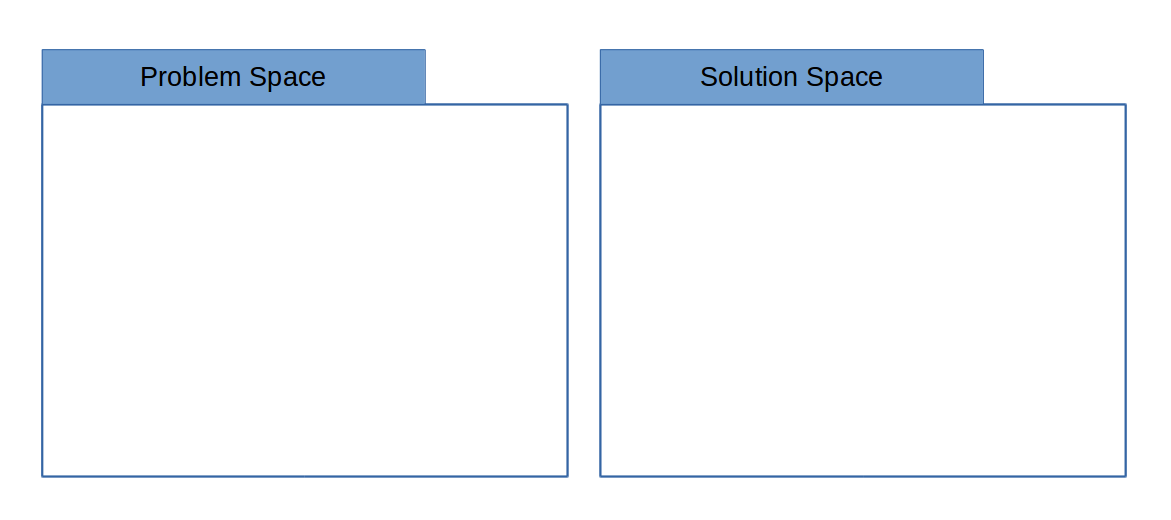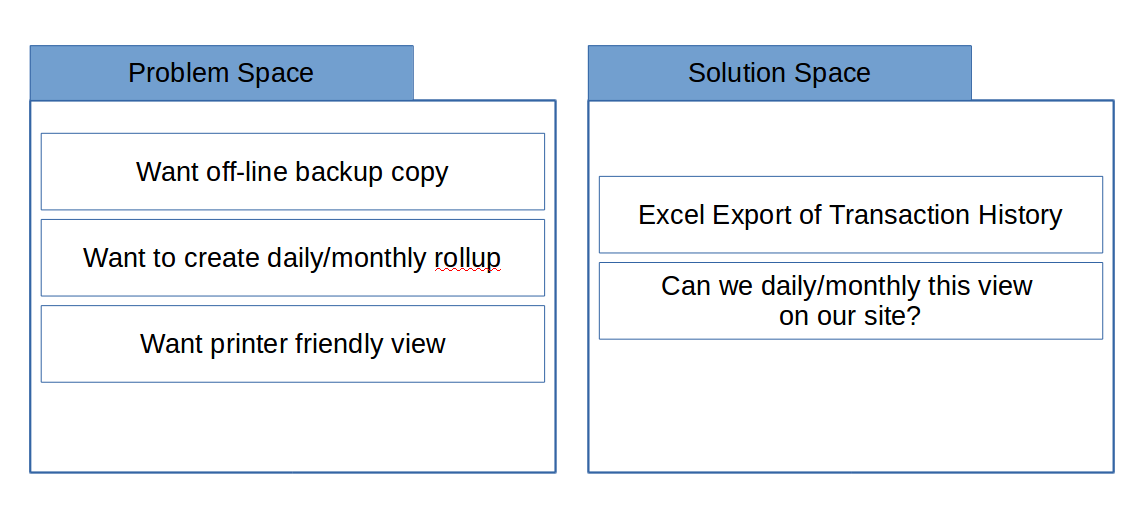
Image courtesy of WikiMedia Commons
Know Your Space
Problem Or Solved?
Let's assume that problem solving involves two critical phases:
- Problem finding - the actual problem
- Solution design - coming up with a solve for the problem
See it was right there in the words. Due to the amazing pattern matching capabilities of the human brain many people jump right to the solution design phase. We'll call them Solutionists since they value and orient heavily around solutions. The other end of the spectrum would be people who spend their time looking for problems. Despite the fact that most people call them Troublemakers We'll call them Insighters.
Solutionists
Solutionists do as their name suggests and think, act, and gravitate towards solutions to a problem. They use pattern matching and experience to come up with the answer to a particular problem. This skill is powerful when honed as it is tied to going with your gut types. They tend to take charge and lead people down the path to a specific solution.
There are downsides to this type of thinking. It is easy to always bring the same solution no matter the problem. This tends to lead to the "if all you have is a hammer, everything looks like a nail" mentality. That mentality is hostile to Insighters as it keeps them from digging into the problem. Solutionists also tend to easily get stuck in a rut and miss out on chances for learning.
Solutionist managers and leaders tend to overrule other's opinions if not careful. In turn the team falls into a state of learned helplessness, dependency on the manager, and in some cases resentment. However, Solutionists shine in high pressure situations when there is not enough time to do thorough analysis and any movement is forward movement.
Solutionist employees tend to be rewarded more easily since at first glance they seem to spend most of their time solving problems. Careful monitoring is sometimes needed to ensure the solutions they implement are not leaving a wake of frustration, quality issues, and team distrust.
Solutionist cultures tend to optimize for valuing shared beliefs and doing things their way. It de-prioritizes critical thinking and learning and focuses on results no matter the means to achieve them.
Some symptoms of Solutionism are:
- thinking "Well I'll just use thing I know about" as soon as you hear about a problem
- talking about the structure/breakdown of the code you would write
An example of someone showing signs of Solutionism:
- user stories or requirements along the lines of "Implement Excel Export on Transaction History screen"
Insighters
Insighters are the other side of Solutionists. They are more analytical and while they can go with their gut they like to understand the why as well. Rather than think about how they would solve a problem right away their first instinct is curiosity. They press for more information sometimes excitedly. For those new to dealing with passionate Insighters the questioning can quickly become overwhelming. They want to dig deeper partly due to a sense that the solution is buried somewhere deep within the problem. That's why they are Insighters. They are trying to uncover the insights below the surface of the proposed problem.
One of the downsides of being an Insighter is the tendency to get into "making a mountain out of a molehill" thinking. By default Solutioninsts think Insighters are trying to stir up trouble and make everything into a big production. All the questions and digging seem like wasting time since Solutioninsts already have a solution in mind. For the Insighter the mess made from the digging is natural and expected so they don't pay it as much attention. They believe, and experience has usually proven correct, that if they keep digging they will find a simpler truth and that this simpler truth will yield a simpler solution.
Insighter managers and leaders are more willing to let the team discover things for themselves. This can prove troubling to some when in high pressure situations the Insighter pushes back and gives the team room to more thoroughly vet the problem and solution. By letting the team learn for themselves they foster independence, critical-thinking, and explicit experimentation.
Insighter employees have a tendency to be labeled as Troublemakers in certain environments. Their curiosity and willingness to dig past commonly accepted opinion can push people out of their comfort zone and they tend to react accordingly. Some handle it better then others and it can be difficult to separate the signal from the noise but in general it's better to assume Insighters have good intentions and just want to help.
Insighter cultures optimize for learning and critical thinking sometimes at the expense of immediate progress. Longer views and shared vision of the goal tend to drive efforts more than the outcome. For these cultures the process and end product are both important so they can improve for the next time.
Some symptoms of Insightism:
- asking questions about how, when, and what else you were doing when the problem occurred
- asking why a line of code was added
An example of someone showing signs of Insightism:
- prodding to be allowed to dig like "Can I talk to a user and SME about why they need an Excel Export on the Transaction History screen"
Battle Lines Drawn
Based on how I presented them you would think that Solutioninsts and Insighters are fated to fight. That doesn't have to be the case as long as we are aware of the problem solving phase which we should be engaging.
It might help to visualize this so lets draw some boxes:

Here we have a space for exploring the problem and the solution. We can add to either side as appropriate so Solutionists can propose solutions without overwriting the exploration of Insighters. There can even be a good camaraderie as each group realized their input compliments the other. Insighters add to the problem space potentially justifying a solution while Solutionists can add to the solution space hopefully validating the problem space. There's a pleasant balance and symmetry to it.

Well Traveled
It goes without saying that most people are a combination of a Solutionist and an Insighter. The problem solving phases should be iterative with research and experimentation intertwined throughout the process. Like most traits people tend to sway to one end of the spectrum or the other. Careful pairing can create amazing synergies as the natural conflict between the ideologies test and strengthen each other. It takes trust and patience by all parties and the results can be exponentially better.
That said it helps to try traveling to spaces outside your comfort zone. If you are an Insighter try working more in the solution space once in a while. You might find areas where things don't need such thorough analysis. If you are a Solutionist try going beyond the default choice and find out more about why the solution exists and what problem it is actually trying to solve. You might find more nuance than you expected and next time your chosen solution can better take into account the context and complexities of the problem.
Good luck and safe travels in problem solving!
